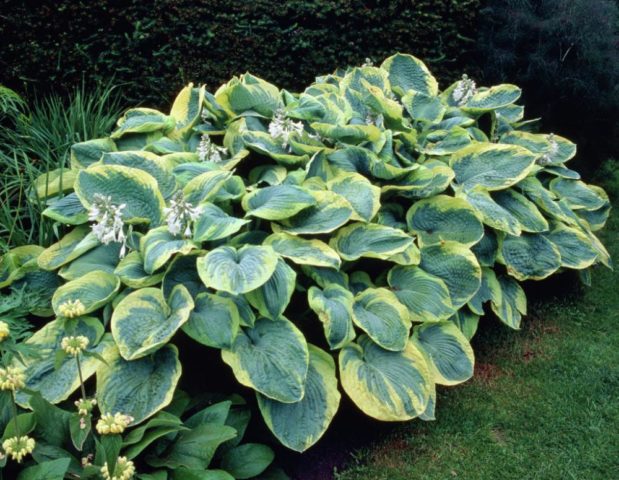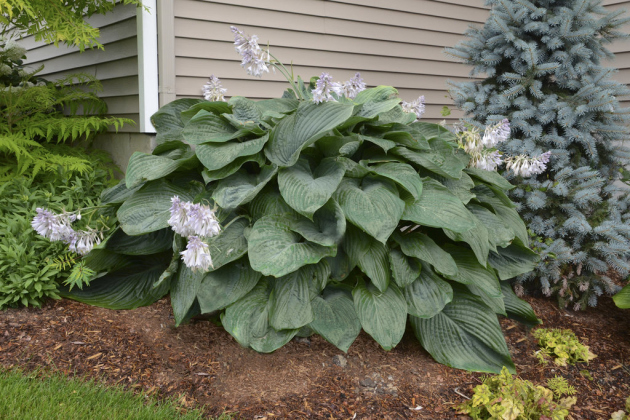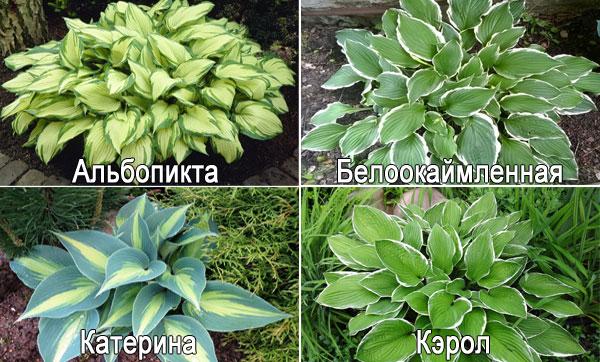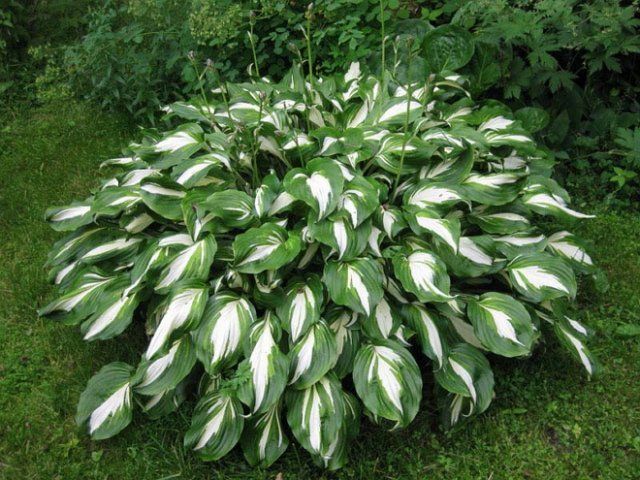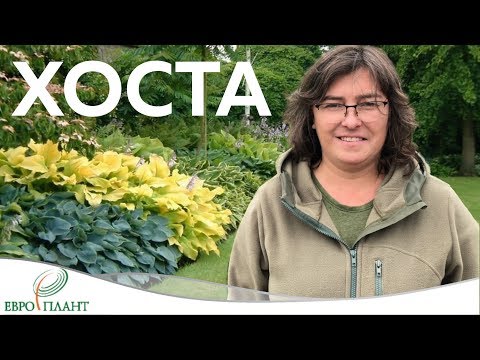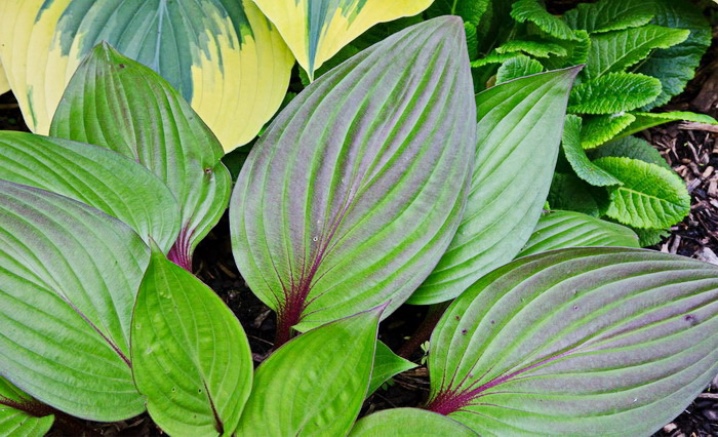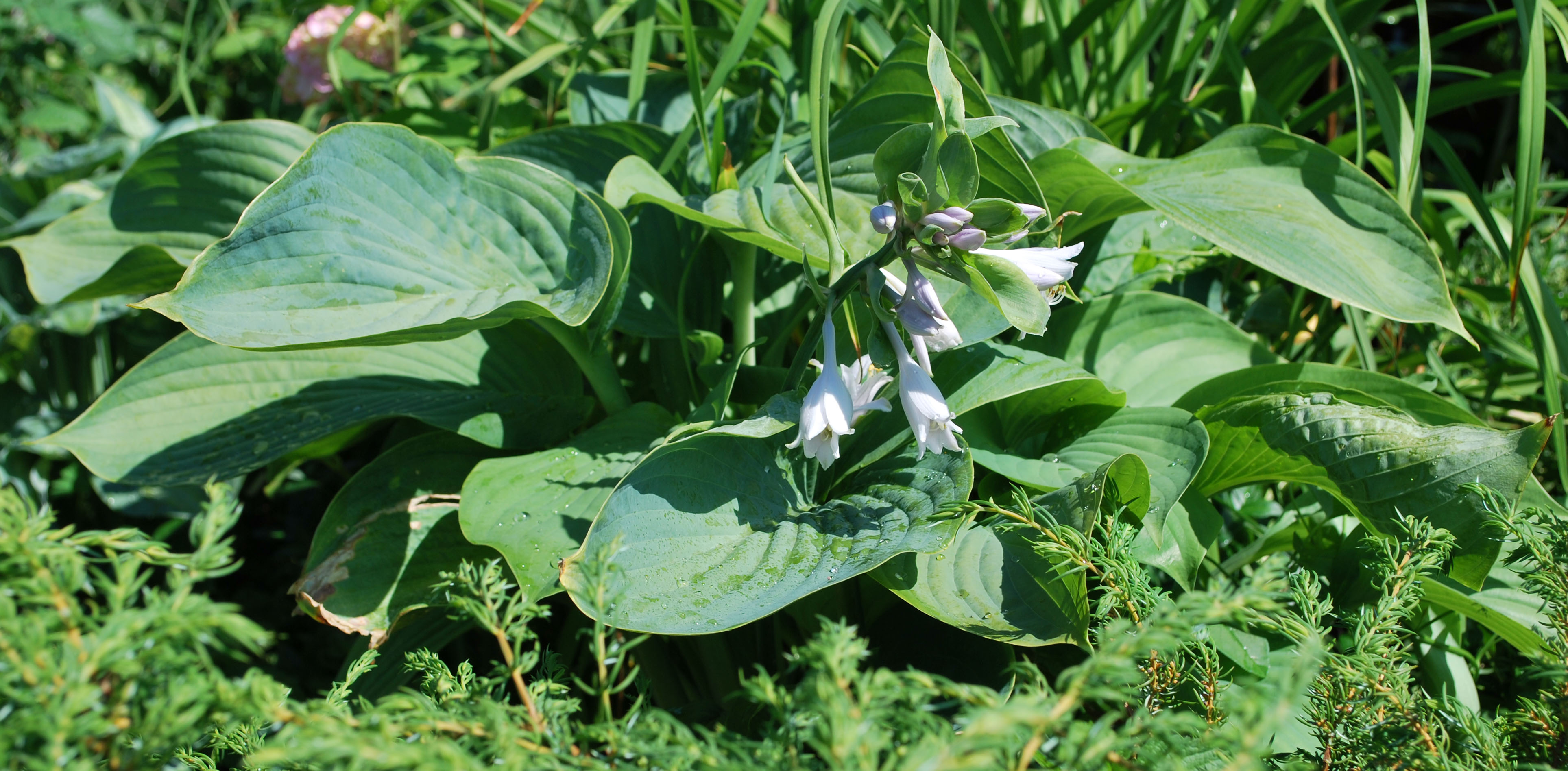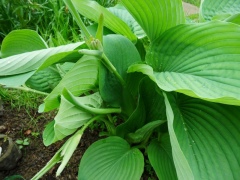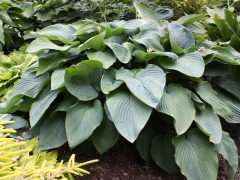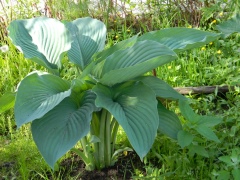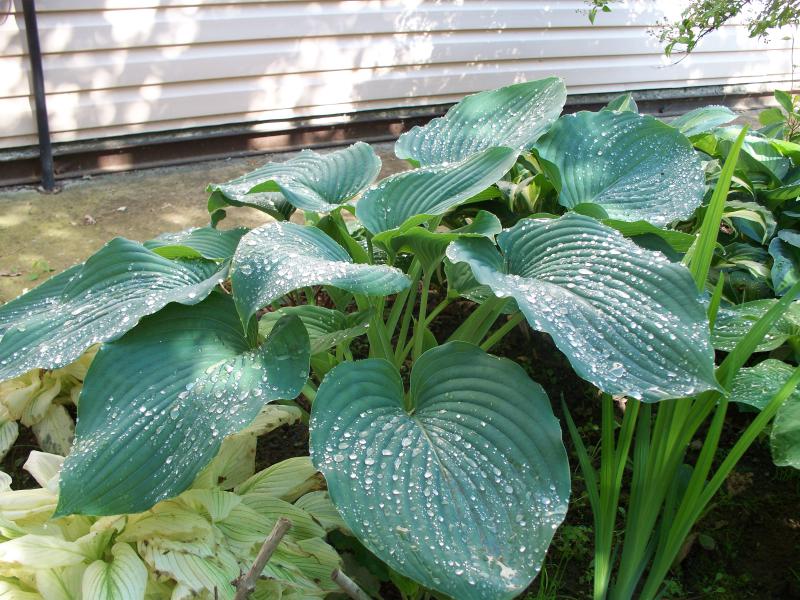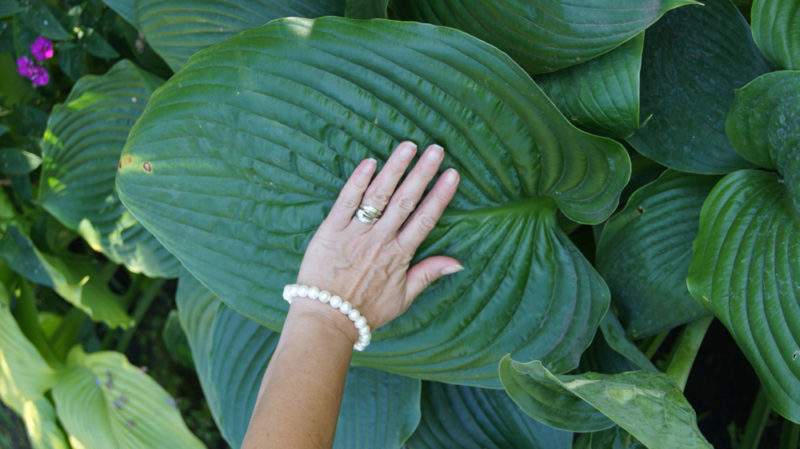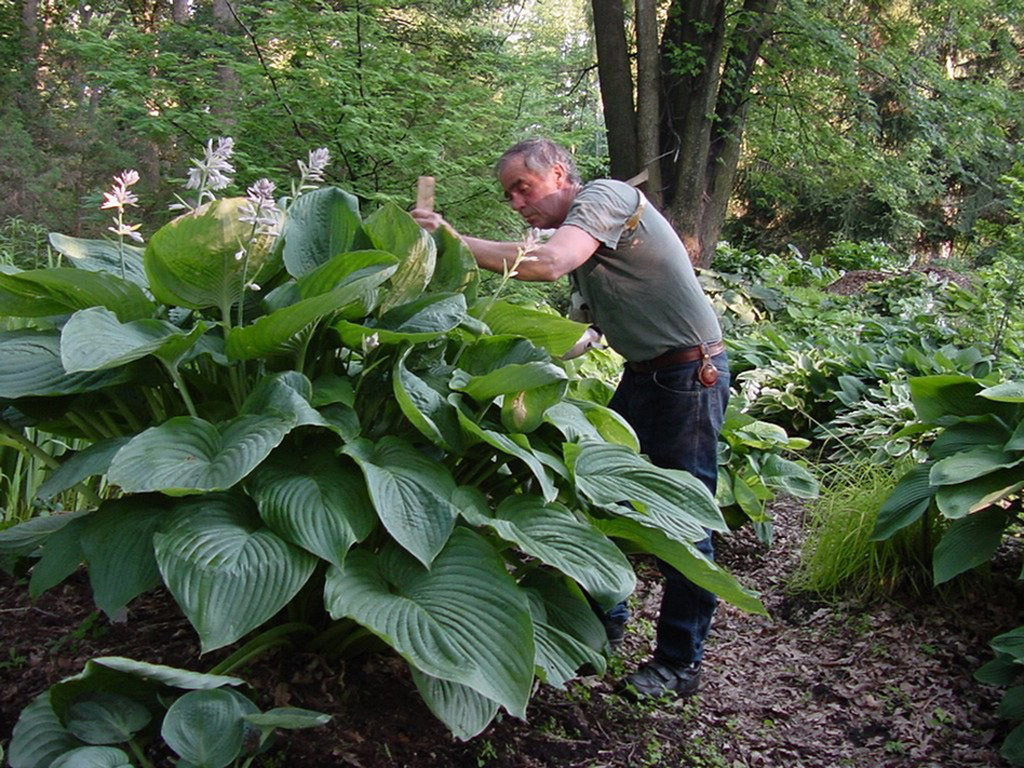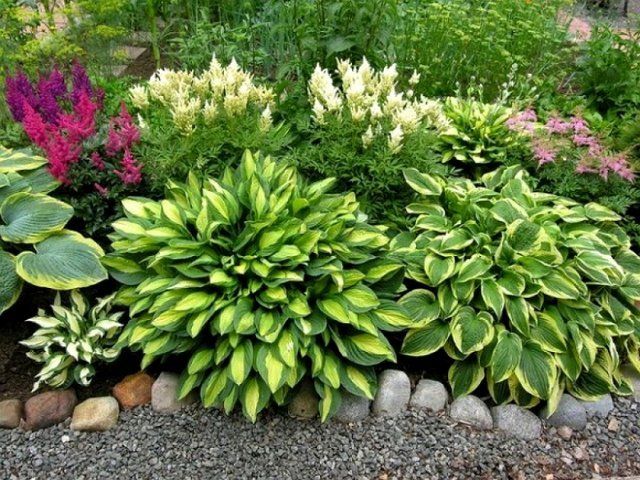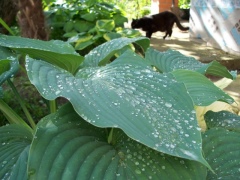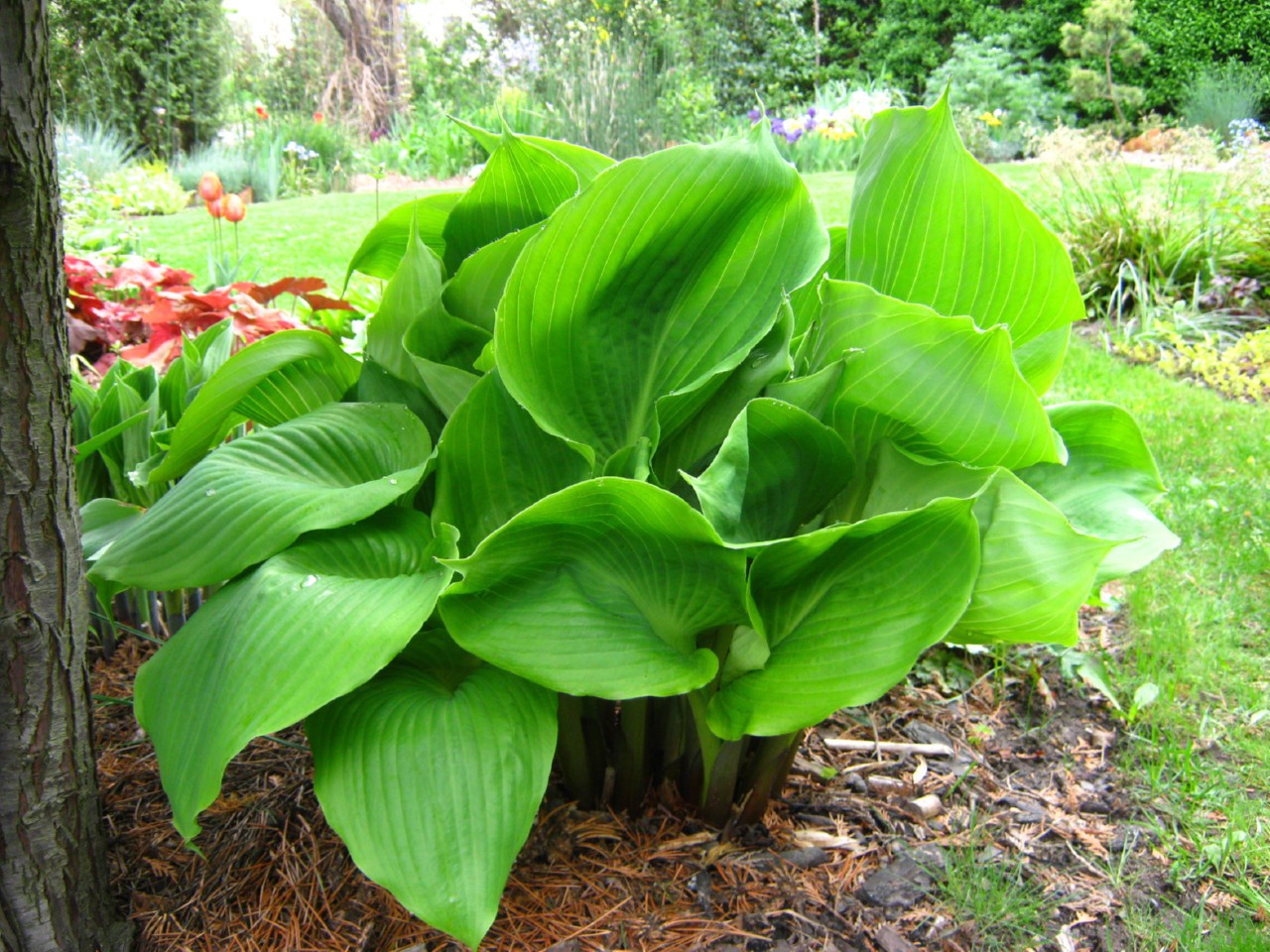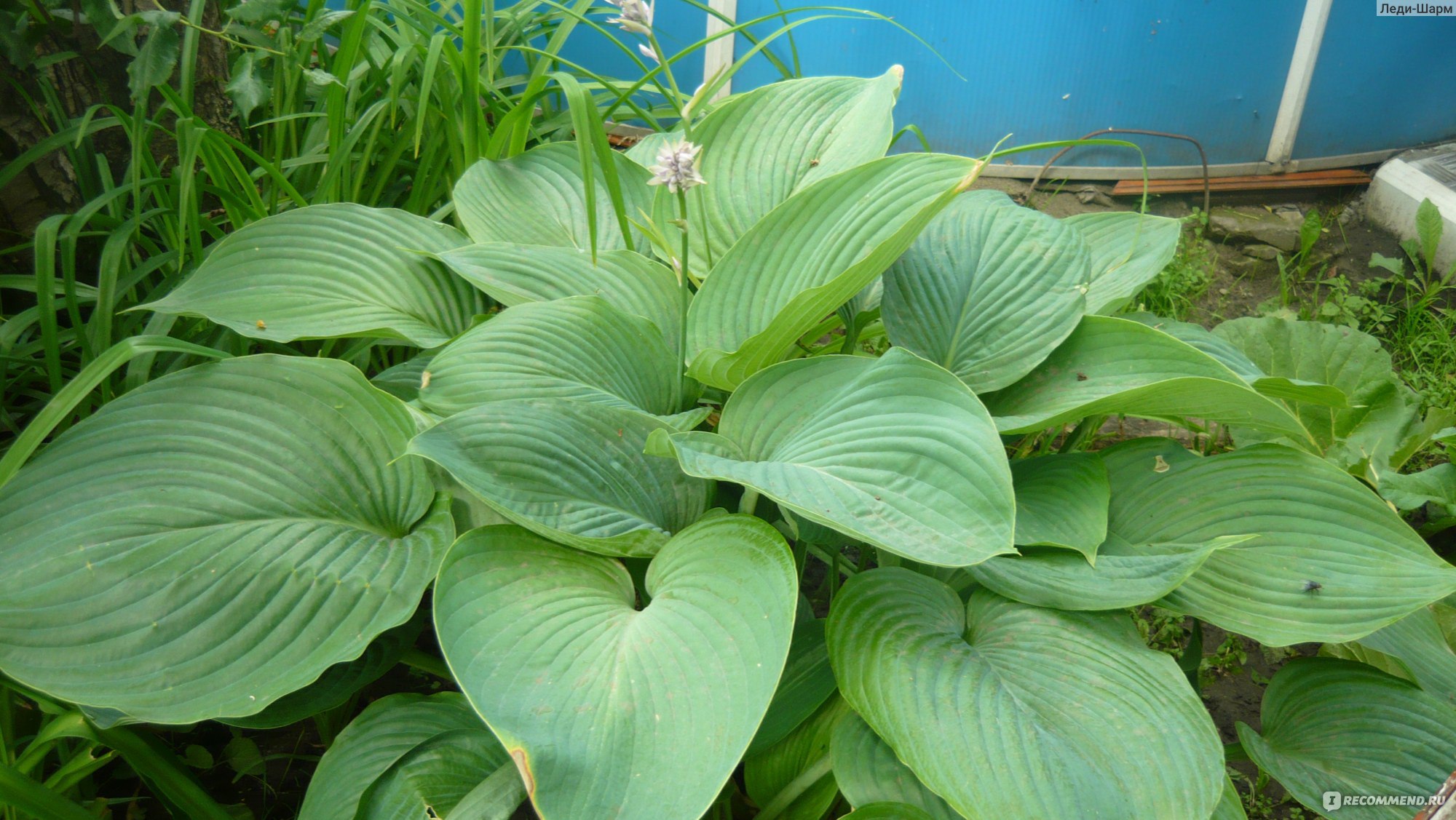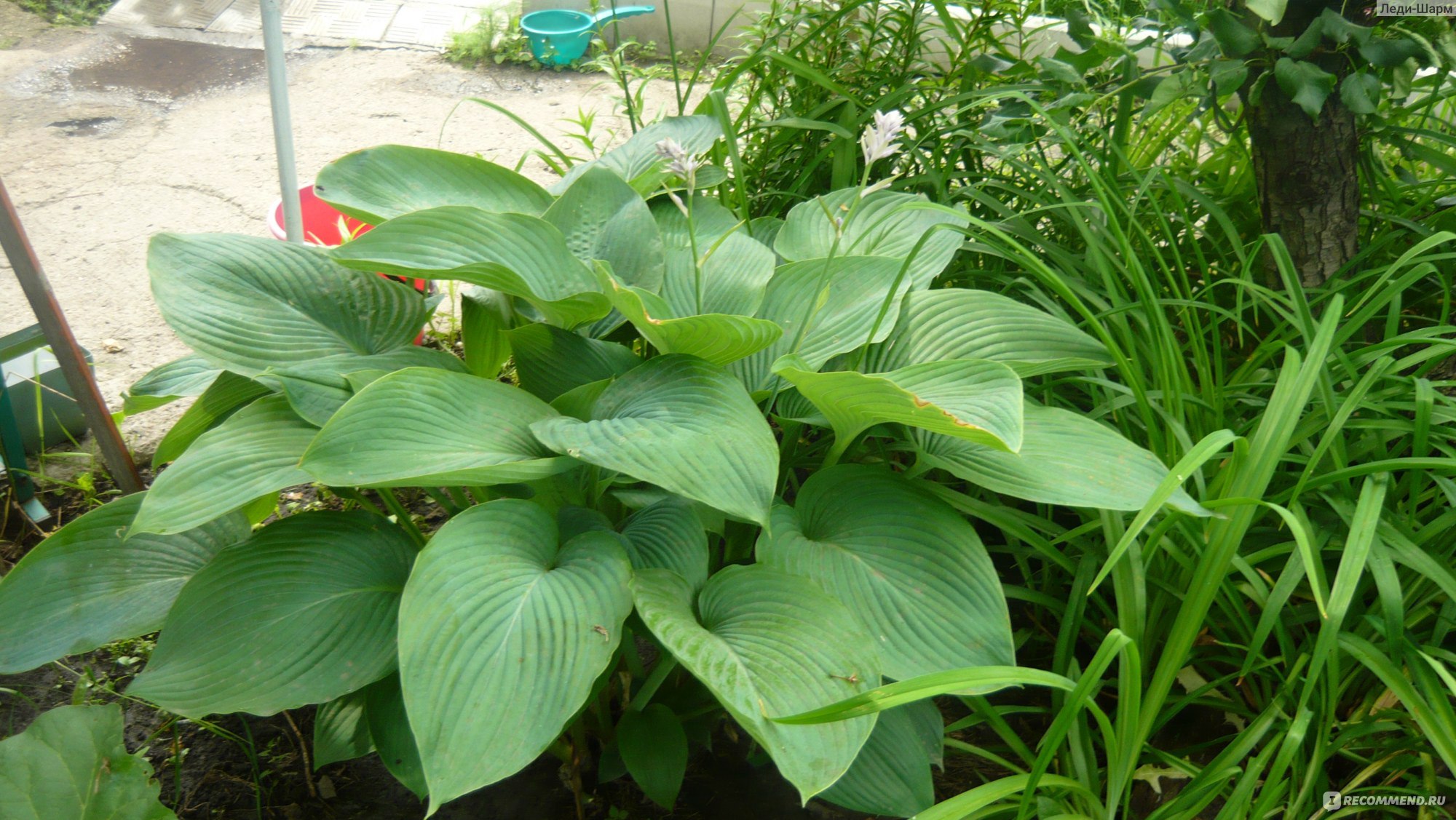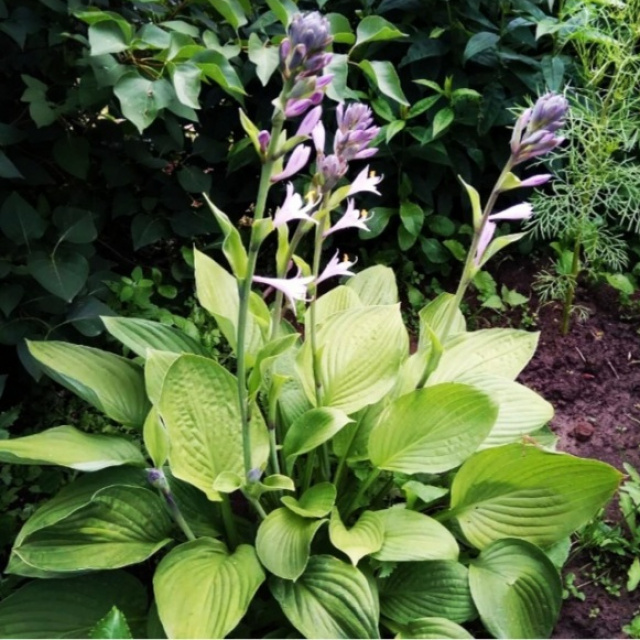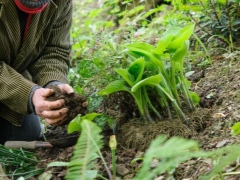Growing conditions for hosts
Hosta is a plant for lazy gardeners. But nevertheless, it will grow and develop in different ways depending on the cultivation conditions. When choosing a place for her in the garden, it is necessary to take into account her biological characteristics.
How to choose a location for hosts
In nature, in the countries of East Asia and the Far East, most species grow on forest edges, among shrubs. Many varieties require similar conditions.
However, there are hosts found in open spaces. Their use in breeding work has led to the production of many hybrids that develop normally and look great in sunny places, form large leaves, while shade-tolerant varieties in open areas seem depressed, lose their decorative effect.
There is another regularity: the larger the area of white and yellow spots on the leaf, the more light-loving the plant is. It is in the light that it manifests its color as much as possible, and when it gets into the shade, it turns green. In the host, this rule applies mostly to varieties with white leaves. Yellow-leaved ones are more plastic, depending on the cultivar, they can grow successfully in sunny areas and in semi-shady corners of the garden.
What kind of soil is needed
Hosts thrive on fertile, moderately moist soils. Damp areas are not suitable. The poor sod-podzolic substrate is enriched with compost, humus with the addition of sand and mineral fertilizers. Plants grow poorly on sandy soils.
How hosta winters
Hosts winter well under the snow, we did not notice their fall due to frost. In spring, as soon as the soil at a root depth (10 cm) warms up to 10-13 ˚C, the vegetation of plants begins. In Western Siberia (Novosibirsk), this happens quite late, at the beginning of the third decade of May.
Therefore, it is better to plant the hosts together with early flowering crops - crocuses, forest trees, galanthuses, daffodils, etc. When the small-bulbous flowers fade by the end of May, the young leaves of the hosts will cover their fallen foliage, which has lost its decorative effect.
In spring, late frosts sometimes damage the leaves, which delays plant development. In early autumn, cold temperatures (minus 1-3 ˚C) lead to loss of turgor, lodging, and death. In some years, frosts occur so early that in most varieties the leaves do not have time to turn yellow.
Landing algorithm
Hosts of the "Gold Standard" variety grow well in areas with any type of soil. The most important criterion when choosing a site is soil moisture. The higher it is, the more leaves grow on the bushes.
This is especially important in the summer, when the heat quickly evaporates moisture.
Hosta negatively affects the stagnation of fluid with abundant watering. Therefore, the soil must be well drained. Young specimens require increased nutritional value so that the root system grows faster and the bush adapts to external conditions.
After choosing a place, boarding takes place in the following way:
- Dig a round hole 40-50 cm deep.
- Drainage is placed at the bottom in combination with a dry garden substrate.
- A layer of cleaned soil mixed with peat and compost is poured on top.
- The seedling is placed in such a way that the buds are placed at a depth of 1-2 cm.
- Sprinkle on top with loose soil, watered.
The landing site must be well protected from the wind
Planting is recommended in the fall. Then the plant takes root better and quickly adapts to unfavorable factors. If you plant the Gold Standard bush in the spring, the nutrients from the soil will be spent on the formation of peduncles, and not the root system. This, in turn, will negatively affect the adaptive abilities of the plant.
Planting and leaving
The soil for hosts can be any, but most of all they love humus-type loams. It will not grow in sandstone, you need to add a fertile component. Moisten the plant in moderation, water stagnation is contraindicated, otherwise the June rhizomes will rot. The more shade, the more optimal the development of the plant will be, but the yellow color of the leaves makes it possible to grow June Fever, for example, in sunny areas. For successful cultivation, you must regularly perform the following manipulations:
- weed the soil from weeds;
- loosen;
- moisturize the plant;
- feed;
- preparation for winter is simple - dried leaves are not removed.
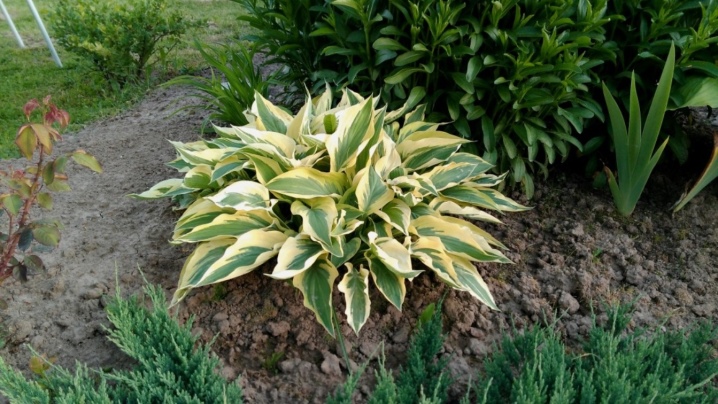
There are several breeding methods for June:
- seeds;
- cuttings;
- dividing the bush.
The division is optimal for transplanting, since the bushes grow very strongly, and the rhizomes are suitable for division at any time.
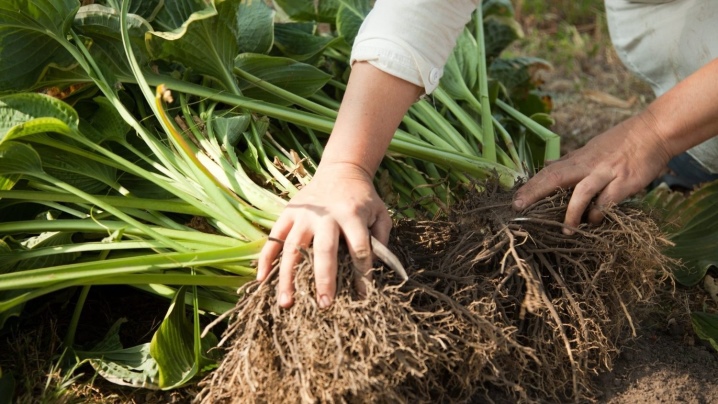
Hosta "Empress Wu": description, landing and care
Hosta or funkiya is a winter-hardy perennial shrub native to the Far East. The main feature of the plant is its large leaf plates and cluster-like inflorescences. Among the variety of hosta species and varieties, "Empress Wu" stands out notably. The size of the variety is almost gigantic in comparison with its congeners. Let us examine in more detail the description of the plant, as well as the measures for planting and caring for it.
Hosta "Empress Wu" is the largest variety, which stands out among other varieties in its size. The plant belongs to the large Asparagus family and bears the name of the only female empress who ruled China. The shrub belongs to herbaceous perennials and prefers to grow near rivers, at the edge of a forest or at the base of mountains. In height, the giant bush reaches 1.5 m, and in width it can grow up to 2.5-3 m. Erect leaves form an extensive rosette.
The structure of the leaf plates is corrugated, in the spring they are covered with a light waxy coating, giving them a matte green-blue tone, and in the summer they acquire a dark green color. "Empress Wu" has an inconspicuous, but at the same time exquisite flowering. Peduncles are tall, with racemose inflorescences, while the buds have the shape of neat funnels, often located on one side. They are painted in a pale lavender color. Abundant flowering, falls mainly in July. The hosta looks most impressive in the third year of life, when the rosette is fully formed, and the flower arrows are covered with numerous delicate inflorescences. After the end of flowering, fruits are formed on the peduncles - triangular capsules, inside which black seeds are placed.
In order for "Empress Wu" to please for a long time with its magnificent view, it is worthwhile to take all the responsibility to the choice of the place and the landing itself. Basic requirements for hosts:
- the plant is undemanding to the composition of the soil, but still prefers loamy soils;
- the soil should not be too wet;
- sandy soil is not very suitable for this variety, but if there is no other choice, then complex mineral fertilizing and humus are mandatory;
- the landing site should be spacious, with light partial shade.
It is worth planting or replanting a shrub in early spring or late autumn. They dig up the earth well, dig a spacious hole, slightly larger than the root system of the bush. It is recommended to add a drainage layer and a little Kemira Universal mixture to the bottom. Then a little earth is poured on which the roots of the plant are well distributed in a circle, covered with soil and tamped.
After planting, the host must be well hydrated.

